GMOs, Chemical Dependance and Gene Escape: What Science Is Warning Us About
The Hidden Hazards of Genetic Engineering
Dr. Mae-Wan Ho warns that genetic engineering inherently promotes horizontal gene transfer (HGT)—the movement of genetic material across unrelated species—which can create new pathogens, spread antibiotic resistance, and destabilize ecosystems. Unlike natural HGT, which is regulated and limited by species barriers, genetic engineering uses artificial vectors that are designed to cross species boundaries and invade genomes, often carrying viral, bacterial, or disease-related genes.
Potential Hazards:
- Creation of new viruses and bacteria capable of causing disease.
- Spread of antibiotic resistance among pathogens.
- Insertional mutagenesis in cells, potentially leading to cancer.
- Reactivation of dormant viruses.
- Broad ecological impacts due to unintended gene flow
Ref:
https://biosafety-info.net/articles/biosafety-science/horizontal-gene-transfer/horizontal-gene-transfer-the-hidden-hazards-of-genetic-engineering/?utm_source=chatgpt.com
GE crops have fueled greater chemical dependence:
- A 2012 study by Charles Benbrook examined U.S. data from 1996–2011 on genetically engineered (GE) crops, including herbicide-resistant soy, corn, and cotton, as well as insect-resistant Bt varieties. Contrary to claims that GMOs reduce chemical use, the study found that herbicide-resistant crops increased herbicide applications by 239 million kilograms due to glyphosate-resistant weeds, while Bt crops only modestly reduced insecticide use by 56 million kilograms.
- Overall, pesticide use rose by about 7%, showing that GE crops have fueled greater chemical dependence rather than reducing it. The research highlights the ecological and health risks of herbicide-heavy GE farming and supports calls to reconsider policies that promote these crops.
Ref: https://www.researchgate.net/publication/257885039_Impacts_of_genetically_engineered_crops_on_pesticide_use_in_the_US-the_first_sixteen_years
"Superweeds" and Glyphosate Resistance
- Studies confirm widespread glyphosate-resistant weeds (over 40 species worldwide), forcing farmers to resort to older, more toxic herbicides like 2,4-D and dicamba. This chemical treadmill is directly linked to herbicide-resistant GMO crops.
A landmark study by Dr. Charles Benbrook (Washington State University, 2012) examined 16 years of U.S. Department of Agriculture data on genetically engineered herbicide-tolerant crops. The findings were stark:
- Herbicide use skyrocketed—from 1.5 million pounds in 1999 to 90 million pounds in 2011.
- The increase was driven by the rapid spread of glyphosate-resistant “superweeds”, directly linked to widespread planting of GE soy, corn, and cotton.
- Farmers were forced to spray higher volumes more frequently and add older, more toxic herbicides like 2,4-D and dicamba to control resistant weeds.
What was promised as a technology to reduce chemicals instead created a chemical treadmill—locking agriculture into escalating pesticide dependence.
- This research demonstrates that herbicide-tolerant GMOs have not only failed to reduce chemical use, but have entrenched it deeper into the food system, with consequences for soil, ecosystems, and human health.
Ref:
https://phys.org/news/2012-10-superweeds-linked-herbicide-gm-crops.html
Benbrook, C. (2012).
Impacts of genetically engineered crops on pesticide use in the U.S.—the first sixteen years. Environmental Sciences Europe.
David Suzuki has expressed strong concerns about GMOs, stating:
“Products of biotechnology are being rammed into our food, onto our fields and into our medicines ... But there are profound health, ecological and economic ramifications of this activity.”
He also warned that:
“Any politician or scientist who tells you these products are safe is either very stupid or lying.”
Canadian environmentalist and geneticist





